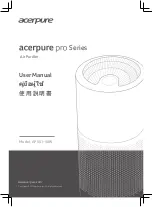
9
M
INI
-S
PACE
EC I
NSTALLATION
, O
PERATION
AND
M
AINTENANCE
M
ANUAL
2.7 Piping
Connections
2.7.1 Refrigerant
2.7.1.1 Self-Contained
Systems
No refrigerant connections are required for self-contained,
water/glycol-cooled systems (models CC( )-041/121-W/G-
EC) and chilled water systems (models CC( )-110-CW-EC).
2.7.1.2
Split
Systems
Split air-cooled systems with a remote condenser will require
fi eld installed refrigerant piping. All split systems are shipped
with a dry nitrogen charge of 50 psig.
NOTE
Mini-Space EC units are not available in a remote
condensing unit confi guration.
Split systems coupled with a remote condenser will require a
copper discharge line and copper liquid line. The connections
are made outside the cabinet. The pipe stubs are labeled; for
example, “Discharge,” “Liquid.” See the installation drawing
for size and location.
All refrigeration piping should be installed with high
temperature soldered joints. Use standard refrigeration
practices for piping supports, leak testing, dehydration and
charging of the refrigeration circuits. The refrigeration piping
should be isolated from the building by the use of vibration-
isolating supports. To prevent tube damage when sealing
openings in walls and to reduce vibration transmission, use a
soft fl exible material to pack around the tubes.
Clear all pipe connections of debris and prepare the
connections for soldering. Use only “L” or “K” grade refrigerant
copper piping. Be careful not to allow solder/piping debris to
get inside refrigerant lines. Silver solder containing a minimum
of 15% silver is recommended. Dry nitrogen should be fl owing
through the tubing while soldering at a rate of not less than
1-2 CFM (.03 - .06 m
3
/minute).
Refrigerant lines for split systems must be sized according
to the piping distance between the evaporator and the
condenser/condensing unit. Each valve, fi tting and bend in the
refrigerant line must be considered in this calculation. Refer
to the following chart provided for determining the standard
equivalent lengths, in feet, of straight pipe.
When installing remote condenser(s) above the evaporator,
the discharge line should include a shallow P-trap at the
evaporator. The highest point in the discharge line should be
above the condenser coil. An inverted trap is required on the
discharge line at the remote condenser to help prevent oil
and liquid refrigerant from fl ooding back to the compressor.
Oil traps must be included every 20 feet in the vertical risers
and the refrigerant lines must be sloped ¼ inch for every 10
feet in the horizontal lines to ensure proper oil return to the
compressor.
Refer to the line size charts provided in Table 1 for
recommended line sizing.
*”Equivalent Ft.” listed in Table 1 through Table 3 accounts for the linear pipe
length as well as equivalent length of valves, elbows and Tee’s.
NOTE
Vertical runs are based on a total rise of 30 equivalent
feet. For greater lengths, individual calculations must
be made. Sizes assume the use of single risers;
double risers may be necessary.
Table 1.
Equivalent Line Size Chart
Equivalent Length (ft) of Straight Pipe
OD (In.)
Line Size
Globe
Valve
Angle
Valve
90º
Elbow
45º
Elbow
Tee
Line
Tee
Branch
1/2
9.0
5.0
0.9
0.4
0.6
2.0
5/8
12
6.0
1.0
0.5
0.8
2.5
7/8
15
8.0
1.5
0.7
1.0
3.5
1 1/8
22
12
1.8
0.9
1.5
4.5
1 3/8
28
15
2.4
1.2
1.8
6.0
1 5/8
35
17
2.8
1.4
2.0
7.0
2 1/8
45
22
3.9
1.8
3.0
10
2 5/8
51
26
4.6
2.2
3.5
12
3 1/8
65
34
5.5
2.7
4.5
15
3 5/8
80
40
6.5
3.0
5.0
17
Recommended Liquid Line Sizes
(For R410A Refrigerant)
CC() Model No./
Total
BTU Capacity
Receiver to Evaporator (Equivalent Length Ft*)
50’ or less
100’ or less
150’ or less
041 / 12,000
3/8
3/8
3/8
061 / 18,000
3/8
3/8
1/2
081 / 24,000
3/8
1/2
1/2
121 / 36,000
1/2
1/2
1/2
Table 2.
Recommended Liquid Line Sizes














































